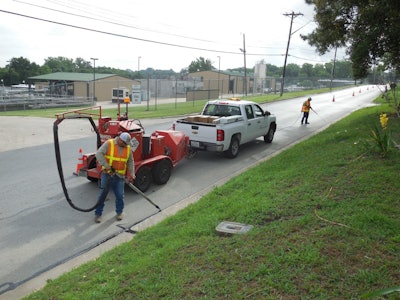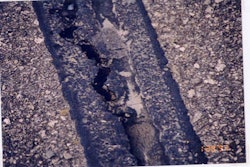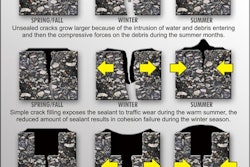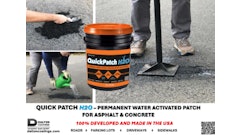
Once you have an understanding of what sealant types are available and recommended by The American Society for Testing and Materials (ASTM), there are basically five contributing factors that are to be considered with regards to sealant selection:
1. Project Specifications
2. Sealant Properties
3. Climate
4. Pavement Conditions
5. Installation
Each different component will help you to determine which type of sealant will best suit your needs. Be sure to work closely with your sealant provider to make sure you’re meeting each of these considerations with your sealant selection.
Applying Project Specs and Sealant Properties to Sealer Selection
Project specifications are the number one factor influencing sealant selection. When the project specs are received, the climate and pavement condition should have already been considered by the agency, etc. ASTM specifications are the most frequently used in crack sealing projects. Once the ASTM standard is chosen, a sealer should also meet these general specifications:
Approvals/Acceptance – Certain sealant materials are approved by the individual agencies or states. There may be more suitable sealants for the project, however these may not be used until they have been accepted by the agency or state.
Availability/Lead Times – The material’s manufacturing and shipping timelines (or delays), may influence sealant selection. This would be relevant in relation to project deadlines or timelines.
Product Cost – At times a variety of sealants may meet the specification with a range of price difference. The project budget will influence which sealant is selected based upon cost
Project Goals/Expectations – Is it a short term solution? (i.e., hold a project together for the winter). Or long term solution (max life expected from the sealant since it may not ever have the benefit of an overlay).
Sealant Selection
Materials used as crack sealants are subjected to a variety of stresses and other effects including horizontal expansion and contraction of the pavement as temperatures change from summer to winter, vertical movements as traffic passes, exposure to water from rain and snow, aging from environmental effects, and abrasion from traffic and highway maintenance operations (sweeping and snowplows).
Therefore, the sealant you choose should have these qualities:
- Adhesion: the ability to adhere and remain adhered to the pavement throughout the range of temperatures, movements, traffic, and other effects encountered.
- High Temperature stability: the ability to remain in place and resist flow, tracking or pick-up by vehicle tires at hot summer temperatures.
- Low Temperature Flexibility/Elongation: the ability to stretch or extend at low temperatures experienced without cracking or de-bonding.
- Elasticity: the ability to restrict entrance of incompressible materials into the crack.
- Viscosity/Application Consistency: the ability to be effectively and easily applied to the crack through the application equipment.
- Aging Resistance: the ability to resist degradation from long term in service weathering .
- Curing: the ability to set up and reach final in-place properties quickly to permit opening of the pavement to traffic
- Pot Life: the ability to maintain physical properties during the time it takes for installation.
- Compatibility with Asphalt Concrete: the ability to not form an oily exudate and remain adhered when in contact with asphalt concrete.





















